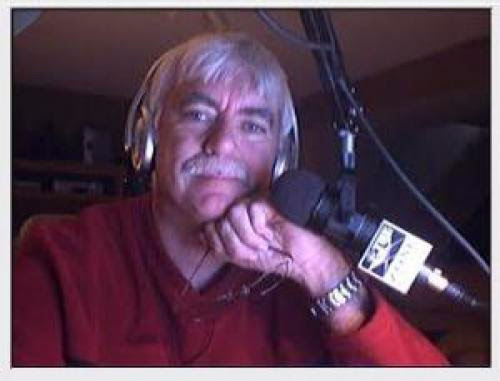
In the Book of Lists #2 by Irving Wallace, David Wallechinsky, Amy Wallace and Sylvia Wallace, a report on the Moon was presented. It was after we had gone there between July 1969 and December 1972. I thought it would be interesting to go over what they found.
11 MOON MYSTERIES UNCOVERED BY THE APOLLO MISSIONS
The historic Apollo voyages rank among the greatest technological feats and exploratory missions humanity has as yet undertaken. Between July 1969, and December 1972 -- a three and a half year period -- 12 astronauts walked on and explored the surface of this alien lunar world, while another six astronauts orbited the moon, studying with sophisticated equipment vast segments of its surface. The dozen astronauts who landed on the moon spent over 300 hours traversing 60 mi. of the lunar surface. Five nuclear-powered scientific stations were set up, which employed sensitive seismometers, heat flow probes, and magnetometers. The astronauts also collected and brought back to earth over 837 LB of carefully selected moon material, mostly rocks and dust. Despite subsequent efforts to study the evidence and data collected -- and though much light has been shed on this mystery world -- scientists still remain in the dark as to the origin and nature of the planetoid. In fact, the more the experts probe, the more mysteries they uncover.
1. THE PUZZLE OF THE MOON'S ORIGIN
Scientists have offered three major theories to account for the moon's existence in our earth's skies. All three are in trouble, but the least likely emerged from Apollo as the foremost candidate. Some scientists thought that the moon might have been born alongside the earth out of the same cosmic cloud of gas and dust about 4.6 billion years ago. Others opined that the moon was the earth's child, ripped out of the Pacific area perhaps. Evidence form the Apollo journeys indicates, however, that the moon and the earth differ greatly in composition. Scientists at the last lunar conferences -- annual rock festivals, NASA scientist Gerald Wasserburg has dubbed them -- favored the so-called "capture" theory. This holds that the moon was accidentally captured in the earth's gravitational field and locked into orbit eons ago. Challengers of this theory point out the immensely difficult celestial mechanics involved in such a capture. Thus all three theories are in serious hot water. NASA scientist Dr. Robin Brett sums it up: "It seems much easier to explain the nonexistence of the moon than its existence."
2. THE PUZZLE OF THE MOON'S AGE
Amazingly, over 99% of the moon rocks brought back turned out upon analysis to be older than 90% of the most ancient rocks found on the earth. The very first rock that Neil Armstrong picked up after landing on the Sea of Tranquillity turned out to be more than 3.6 billion years old, while the oldest earth rocks are approximately 4.5, and even 4.6 billion years old -- about the age of the earth and its solar system. At the Lunar Conference of 1973, one lunar rock was alleged to be 5.3 billion years old. The most puzzling aspect is that most of these were taken from areas that scientists thought were the youngest surfaces of the moon. Based on such evidence, some lunar scientists have concluded that the moon was formed among the stars long before our sun was born.
3. THE PUZZLE OF HOW MOON SOIL COULD BE OLDER THAN LUNAR ROCKS
The perplexing age of the moon is highlighted by an even more puzzling conundrum. Rocks taken from the Sea of Tranquillity, where the US astronauts first landed, were young compared to the soil on which they rested. Upon analysis, this proved to be at least a billion years older. This would appear to be impossible, since the soil was presumably the powdered remains of the rocks lying alongside it. However, chemical analysis of the rocks revealed that the lunar soil did not come from the rocks but from somewhere else.
4. THE PUZZLE OF WHY THE MOON "RINGS" LIKE A HOLLOW SPHERE WHEN A LARGE OBJECT HITS IT
During the Apollo expeditions, ascent stages of lunar modules and spent third stages of rockets crashed on the hard surface of the moon. Every time, these caused the moon, as NASA documents state, to "ring like a hung gong or bell." On the Apollo 12 flights, reverberations lasted from nearly an hour to as much as four hours. So far no scientist has adequately explained this bizarre lunar behavior.
5. THE PUZZLE OF THE MYSTIFYING MARIA OF THE MOON
The strange dark circular areas of the moon (maria), some of which form the "man in the moon" for viewers standing on the earth, are puzzlingly located almost entirely on one side of the moon. When lunar missions landed on these peculiar dark plain like areas, astronauts found it extremely difficult to drill into the lunar surface. Soil samples are loaded with rare rough metals like titanium (used in supersonic jets and spaceships), along with such rare metallic elements as zirconium, yttrium, and beryllium. Scientists were dumbfounded, because these elements require tremendous heat -- about 4,500 F -- to melt and fuse with surrounding rock.
6. THE PUZZLE OF THE RUSTPROOF PURE IRON FOUND ON THE MOON
Lunar samples brought back to the earth by both American and Soviet space probes contain pure iron particles, Scientists have concluded that the iron did not come from meteorites. Soviet remote-controlled lunar probe Zond 20 brought back tiny samples in which such pure iron particles were discovered, and TASS announced recently that they have not oxidized even after several years on earth. Pure iron particles that do not rust are unheard of in the scientific world.
7. THE PUZZLE OF THE MOON'S HIGH RADIO ACTIVITY
The upper 8 mi. of the moon's crust are surprisingly radioactive. When Apollo 15 astronauts used thermal equipment, they got unusually high readings, which indicated that the heat flow near the Apennine Mountains was hot indeed. In fact, one lunar expert confessed: "When we saw that we said, 'My God, this place is about to melt! The core must be very hot.'" But that is the puzzle. The core is not "very" hot. However, the amount of radioactive materials on the surface is not only "embarrassingly high" but, considering the relatively cold interior, difficult to account for. Where did all this hot radioactive material (uranium, thorium, and potassium) come from? And if it came from the interior, how did it get to the moon's surface?
8. THE PUZZLE OF THE IMMENSE CLOUDS OF WATER VAPOR ON A DRY MOON
The first few lunar excursions indicated that the moon was an extremely dry world. In fact, one lunar expert concluded that it was "a million times as dry as the Gobi Desert." The early Apollo expeditions did not find even the slightest trace of water. But after Apollo 15, the lunar experts were rocked back on their collective heels when a cloud of water vapor more than 100 sq. mi. in size was detected on the moon's surface. Red-faced scientists suggested that two tiny tanks, abandoned on the moon by US astronauts, had somehow ruptured. But the tanks could not have produced a cloud of such magnitude. Nor would the astronauts' urine, which had been dumped into the lunar skies, be an answer. The water vapor appears to have come from the moon's interior.
9. THE PUZZLE OF THE GLASSY SURFACE ON THE MOON
Lunar explorations have revealed that much of the moon's surface is covered with a glassy glaze, which indicates that the moon's hide has been scorched by an unknown source of intense heat. As one scientist put it, the moon is "paved with glass." The experts' analysis shows this did not result from massive meteor impactings. Some feel that an intense solar outburst, a kind of mininova, might have been responsible.
10. THE PUZZLE OF THE MOON'S STRANGE MAGNETISM
Early lunar tests and studies indicated that the moon had little or no magnetic field. Then lunar rocks proved upon analysis to be strongly magnetized. This shocked scientists, who had assumed that the moon had always been without a magnetic field. As the late Dr. Paul Gast of NASA observed, these rocks had "some very strange magnetic properties... which were not expected." If the moon did actually have a magnetic field at one time, then it must have possessed a big iron core, but equally valid data and evidence show that such a huge hot core could not have existed inside the moon. Neither could the moon very well have picked up the magnetism from the magnetic field of another body like the earth. In order to do so, the moon would have had to approach so close that it would have been torn apart by the gravitational pull.
11. THE PUZZLE OF THE MYSTERIOUS "MASCONS" INSIDE THE MOON
In 1968, tracking data of the lunar orbiters first indicated that massive concentrations (mascons) existed under the surface of the circular maria. In fact, the gravitational pull caused by them was so pronounced that the spacecraft passing overhead dipped slightly and accelerated when flitting by the circular lunar plains, thus revealing the existence of these hidden structures. Scientists have calculated that they are enormous concentrations of dense, heavy matter centered like a bull's-eye under the circular maria. As one scientist put it: "No one seems to know quite what to do with them."
"Thank you Neil for sending this interesting article in to be included on the blog. The only thing it didn't say was that the astronauts saw "alien vehicles" on the moon watching them.






0 comments:
Post a Comment